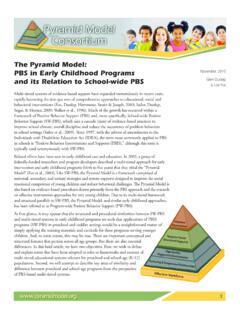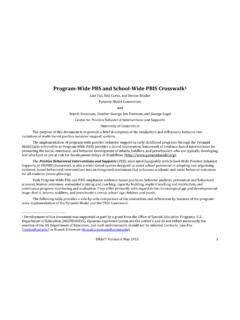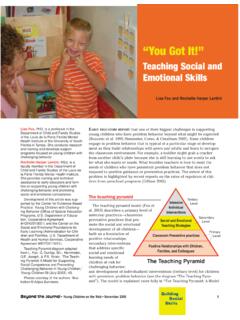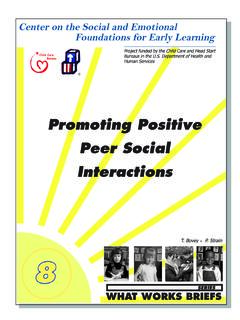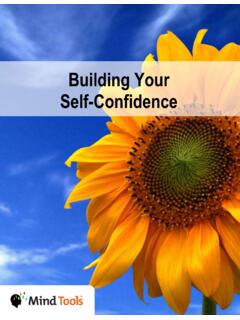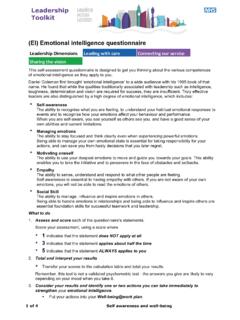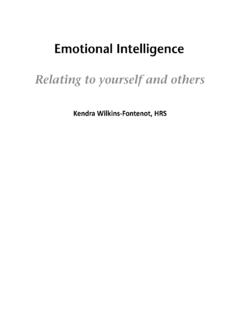Transcription of Self-Care for Teachers - University of South Florida
1 National Center for Pyramid Model Innovations | 1 Self-Care for Teachers Regulating your responses when children s behaviors push your buttonsWhen children engage in behavior that pushes your buttons, it is important to be intentional in how you respond. Making a plan will help you remain calm when you respond. By being calm, you will be able to objectively observe the child s behavior and think about what the behavior is communicating. This will help you respond in a way that is supportive of the are strategies that you might use when a child s behavior pushes your buttons:Before your Buttons Before your Buttons Are PushedAre PushedThink, Think, Think about your PLAN! How can I respond when the child starts pushing my buttons?
2 How can I take care of myself and still support the child? Can I make changes in the environment to support the child and decrease the challenging behavior? Have I taught rules to the child in my classroom? Have I provided individual supports for the child? What activities does the child particularly enjoy? What helps the child calm down? What helps the child feel safe and secure? Have I taught strategies to help the child calm down?Hot Button ActivityCheck out the Hot Button Activity to reflect on behaviors that push your buttons and how your responses affect children and families. your thinking about the child s behavior that pushes your buttons. Jalen is tired and needs a break. Susan is frustrated because she doesn t want to wear a mask.
3 Marco doesn t understand the new routine and needs some help. John doesn t feel safe. Self-Care for Teachers 2 National Center for Pyramid Model Innovations | reproduction of this document is encouraged. Permission to copy is not required. If modified or used in another format, please cite original source. This is a product of the National Center for Pyramid Model Innovations and was made possible by Cooperative Agreement #H326B170003 which is funded by the Department of Education, Office of Special Education Programs. However, those contents do not necessarily represent the policy of the Department of Education, and you should not assume endorsement by the Federal Government. Pub: 10/30/20 While your Buttons are Being PushedWhile your Buttons are Being PushedTry one or more of these: Pause and take a deep breathe Breathe slowly and deeply Focus on breathing.
4 Notice your breath, try counting when you inhale and counting when you exhale Step back (not away) Count to 10 Use positive self -talk: I ve got this! Hold and squish a stress ball Help the child use their preferred way to calm down Tag in a colleague to help support the child if you need a breakReFRAME the child s behavior. What might they be trying to tell me? I don t know what to do. I miss home. I don t have words to tell you how I feel. I am frustrated and this is hard. Can you help me? After the Button-Pushing Behavior has EndedAfter the Button-Pushing Behavior has Ended Take time to breathe! Reflect Identify your emotions. What was the child trying to tell you? Is there another strategy that might have worked better?
5 Journal about the experience. Collaborate and connect. Find a colleague to check in with and reflect. Find positive ways to re-connect with the child to strengthen your ! Challenging behavior is a signal that the child may need support and instruction in social-emotional skills. What skills might I teach them?Teach the ways to calm down and regulate their emotions. how to express emotions. how to communicate needs.


